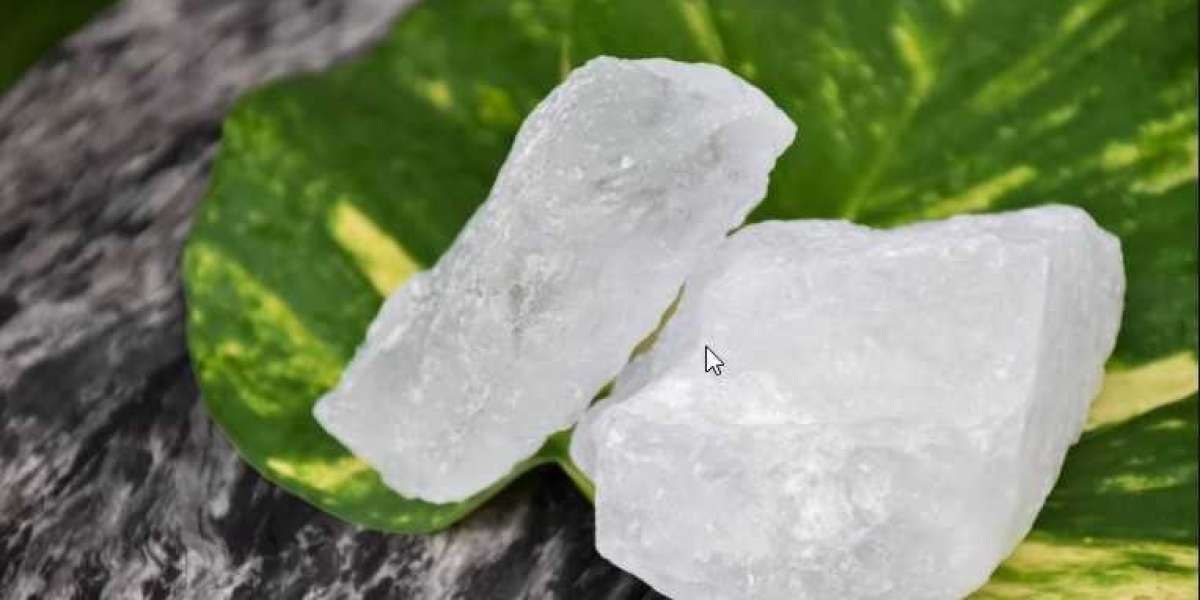Introduction:
Alum is a mineral found in nature in both pure and impure forms. It is a mineral salt. It is obtained from the soil ore found in Nepal, Bihar, Punjab, and the Kathiawar area.1 It is a colourless, clear, odourless, crystalline mass or granular powder with a sweetish astringent flavour. It is found in Egypt, Italy, England, Germany, and India.
Phitkari, phatkiri, phatphadi (Bengali); aluminous sulphate, sulphate of alumina and potash, sulphate of aluminium and ammonium (English); phatkari (Gujrati); phitkari, phitikhari, phitkiri (Hindi); fatkari (Punjabi); pati-karam, padikharam, shinacarum (Tamil); sphatikari, surashtraja, kamakshi, tuvari (Sanskrit); pitki (Sindhi) are the common names of alum.2
When heated, it melts at around 200 degrees resulting in an anhydrous salt. It is frequently contaminated with impurities in markets. It may be made suitable for potential health uses.2 It is found in many pharmaceutical, cosmetic, and food products. It has a strong astringent quality. It comes in four different colours: white, green, yellow, and red. White is known as phitkari, green is known as heera kasees, yellow is known as kasees, and red is known as surkh phitkari. The most notable quality alum, according to Unani physicians, is one that easily shatters.3
Chemical Composition of Alum:
Alum is composed of potassium, aluminium, hydrogen, sulphur and oxygen.1
Properties of Alum:
Various properties of alum are listed below.3
- It might be an antibacterial agent
- It might have an antiplatelet (prevents platelet aggregation) property
- It might have an anti-obesity activity2
- It may be an anti- haemorrhagic (stops bleeding) agent1
- It may have an anti-inflammatory potential
- It may have an antidandruff property
- It may be an anti-asthamatic3
Potential Uses of Alum:
Potential use of alum for infections:
Different alum concentrations were tested against Proteus mirabilis, which causes urinary tract infections. The study’s findings revealed that potential antimicrobial activity was demonstrated by the possible loss of bacteria motility in culture media.1
Using an in-vitro bioassay method, the antibacterial activity of alum and clove extract was assessed against pathogens such as S. aureus, S. epidermidis, E. coli, and K. pneumonia. Potential antibacterial activity was observed in the alum and clove extracts, suppressing bacterial growth isolated from various infection sites.2
Using alum mouthwash and rinsing twice a day might be efficient in lowering the level of salivary mutans Streptococci in the children.3
The antifungal activity of alum was tested on yeast isolated from mouth lesions. It was concluded that alum might help control fungal isolates and it might be helpful against infections such as oral thrush and mouth ulcers.3 However, more studies are required to ascertain the use of alum for infections.
Potential use of alum for platelets:
In an animal model, the antiplatelet action of alum was investigated in terms of platelet aggregation and bleeding time. After alum injection, platelet aggregation was significantly lowered. The time it took for an animal model to bleed after receiving an alum injection was also much longer. The study’s findings suggest that alum might be helpful as an antiplatelet drug.2 However, more studies on humans are required to prove its effectiveness.
Potential use of alum for obesity:
In an obese animal model, oral intake of potash alum showed a potential to cause possible reduction of body weight, food intake, serum triglycerides, total cholesterol, and high-density lipoproteins. This shows the possible anti-obesity effect.3 However, more studies on humans are required to prove such effects.
Potential use of alum for stomatitis (inflamed mouth):
Recurrent stomatitis is caused by antibiotics, painkillers, and other drugs. A topical application of alum can be helpful for this condition.1 It may help stomatitis and may be administered along with honey.2 However, more research is required to prove the potential use of alum for stomatitis. Kindly consult a doctor and do not self-medicate.
Potential use of alum for post-operative wounds:
Alum might show some effect on post-operative wounds.Alum may be dissolvedin water and used for helping with the post-operative wounds.1 There is a need for more studies to prove its effectiveness for post-operative wounds. Kindly do not self-medicate as healing of post-operative
Potential use of alum for tumour:
Animal studies have shown the possible anti-tumour effect of alum. An animal model was injected with alum. The results of the study indicated potential in tumour growth reduction in the animal model.3 However, more research is required to prove such claims. Moreover, tumours should be diagnosed and treated by doctors. Therefore, kindly consult a doctor.
Though there are studies that show the potential use of apricot in various conditions, but these are insufficient and there is a need of further studies to establish the true extent of benefits of apricot on human health.
How to Use Alum?
Alum can be used as alum powder or solution.2 Your Ayurvedic physician will prescribe you the dose and form as per your need.
You must consult a qualified doctor before taking any herbal supplements. Do not discontinue or replace an ongoing treatment of modern medicine with an ayurvedic/herbal preparation without consulting a qualified doctor.




